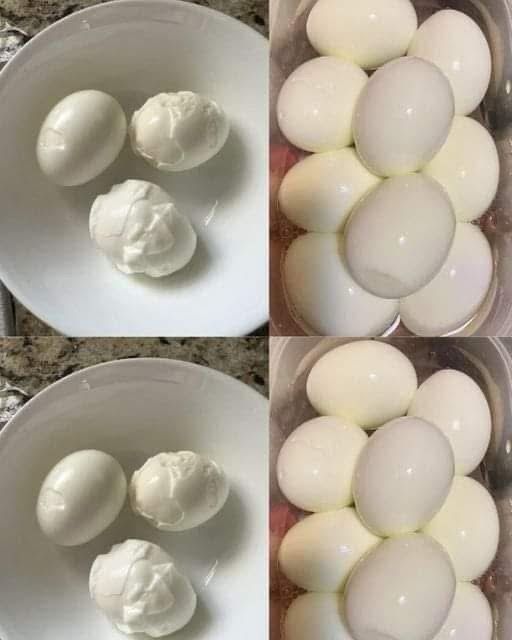Introduction:
Making the perfect hard-boiled egg can be trickier than it seems.
A perfectly cooked egg with a smooth, intact shell that easily peels off is a kitchen achievement worth mastering.
Many home cooks struggle with peeling their hard-boiled eggs, often finding themselves with ragged whites that get stuck to the shell.
The good news is, there’s a foolproof method to achieve flawlessly cooked eggs that peel effortlessly.
Here’s the secret to getting that perfect hard-boiled egg every time!
Ingredients:
Fresh eggs (as many as you need)
Water
Instructions:
Place the eggs in a saucepan: Carefully arrange your eggs in a single layer at the bottom of the pot. Avoid overcrowding.
Add cold water:
Fill the pot with enough cold water to cover the eggs by about 1 inch (2.5 cm).
Bring to a boil: Place the saucepan over medium-high heat. Once the water begins to boil, immediately reduce the heat to low to keep a gentle simmer.
Let the eggs cook for 9-12 minutes, depending on your desired level of firmness (9 minutes for slightly soft, 12 minutes for firm).
Ice bath: Once the eggs have finished cooking, immediately transfer them to a bowl of ice water.
Let them sit for at least 5 minutes to cool down quickly and stop the cooking process.
Peel the eggs: Gently tap the eggs on a hard surface to crack the shell.
Roll the egg lightly to loosen the shell. Start peeling from the wider end, where there’s usually an air pocket, making the peeling process easier.
Description:
The secret to perfectly peeled hard-boiled eggs lies in cooking them just right and then cooling them quickly.
The ice bath is a key step that stops the cooking process and helps separate the membrane from the egg white, making peeling much easier.
Fresh eggs tend to be more difficult to peel, so using slightly older eggs, or letting your eggs sit in the fridge for a few days, can improve the process.
Tips:
Use older eggs: Slightly older eggs are easier to peel.
If you plan to make hard-boiled eggs in advance, try to use eggs that are at least a few days old.
Don’t overcook: Overcooking eggs can make them dry and difficult to peel.
Stick to the recommended time (9-12 minutes), adjusting based on your preference.
Crack and roll: Gently crack the shell and then roll the egg on the counter to loosen it.
This method is much easier than peeling from one side only.
Peel under running water: If you’re having trouble peeling, try doing it under a gentle stream of cold water.
This helps to wash away any tiny bits of shell that might stick to the egg.
Variations:
Soft-boiled eggs: Reduce the cooking time to 4-6 minutes for a runny yolk.
Pickled eggs: After boiling and peeling your eggs, you can pickle them in vinegar, spices, and herbs for a flavorful twist.
Spiced eggs: Before boiling, you can add some seasoning or spices to the water to infuse the eggs with a subtle flavor.
Corrections:
Overcooked eggs: If your eggs are overcooked and have a greenish ring around the yolk, this is due to the sulfur in the egg reacting with the iron in the yolk.
To avoid this, make sure to time the cooking precisely.
Difficult peeling: If you’re having trouble peeling even after following the instructions, try using eggs that are a little older. Fresh eggs often result in more stubborn shells.
Enjoy:
Once you’ve peeled your hard-boiled eggs, enjoy them on their own, in a salad, or as a protein-packed snack.
With the perfect technique, you’ll always be able to enjoy a smooth, easy-to-peel hard-boiled egg every time.

